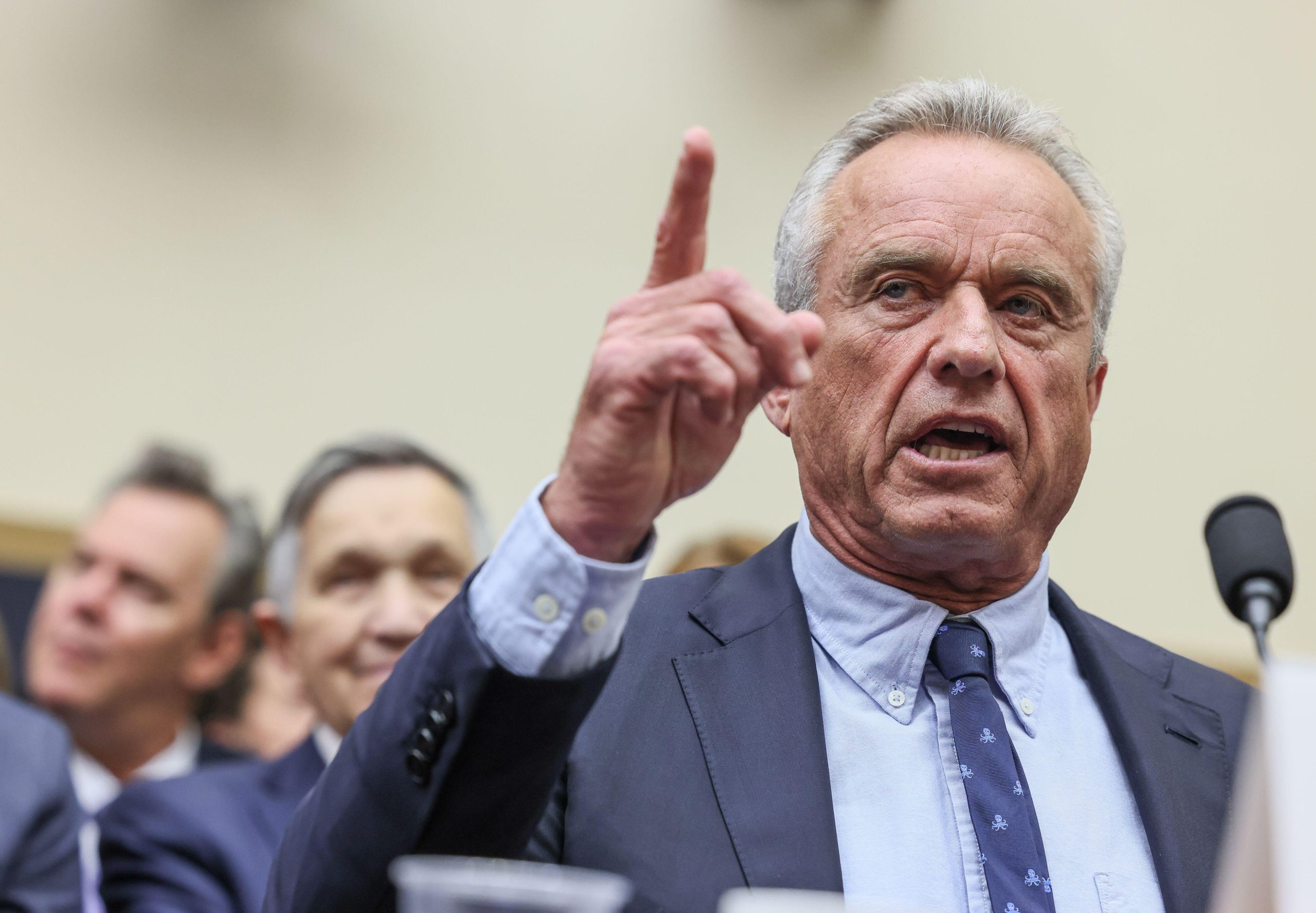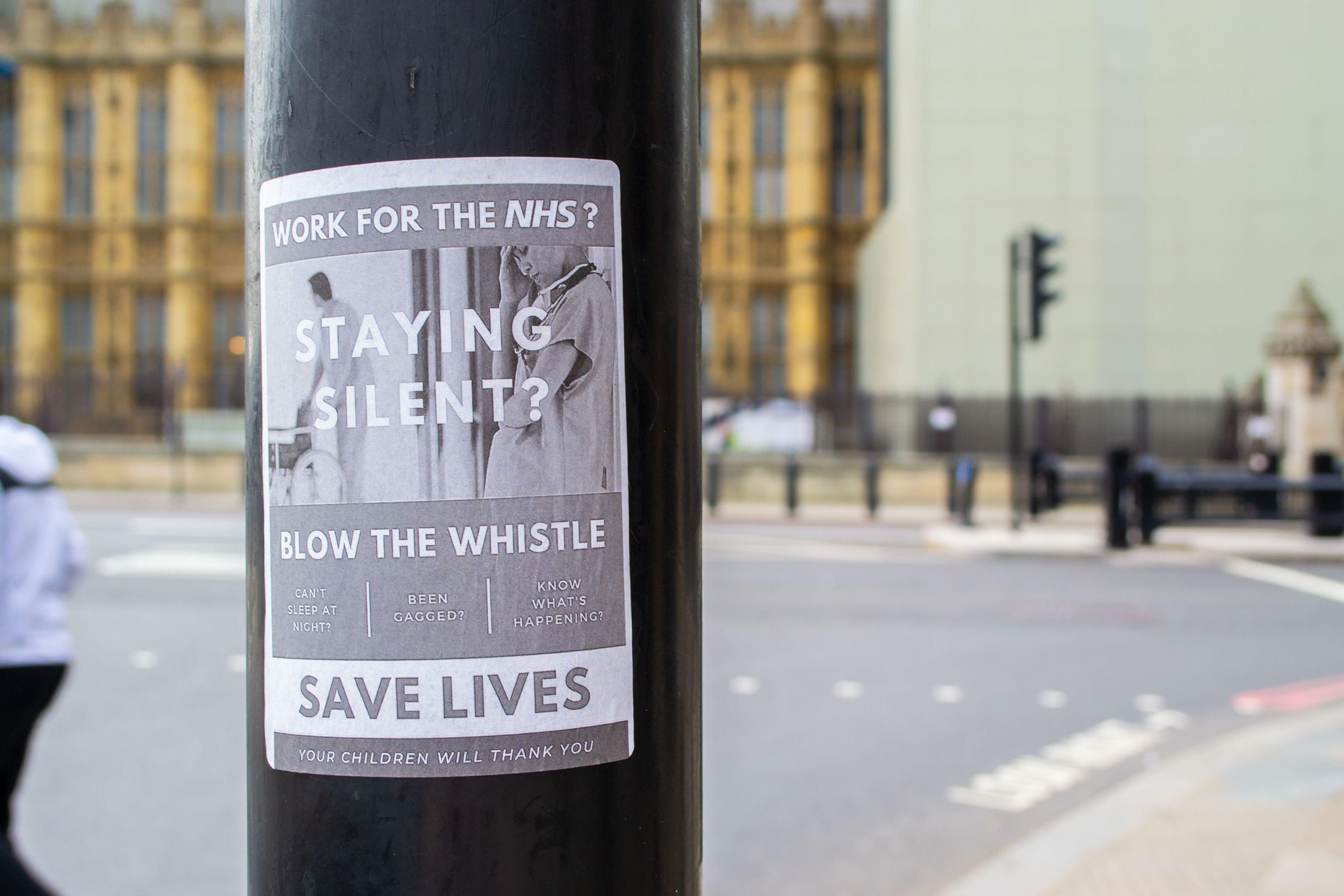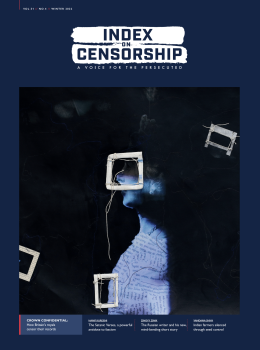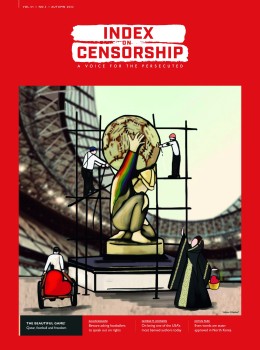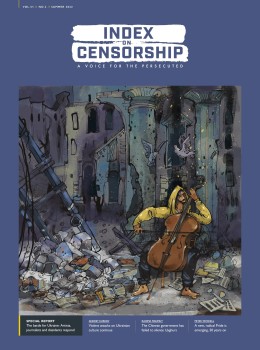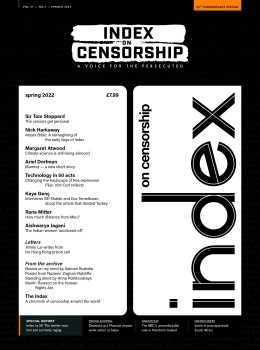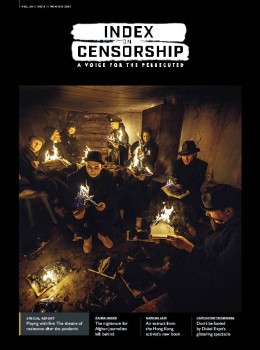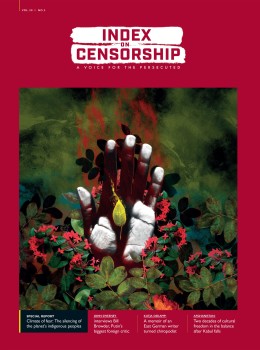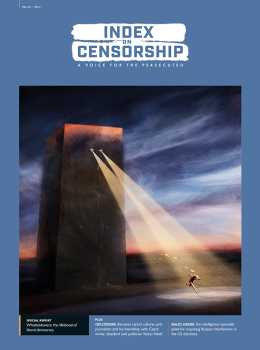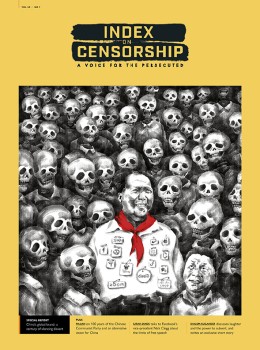 Impunity is an urgent issue facing press freedom campaigners. Joel Simon of the Committee to Protect Journalists outlines a roadmap for action
Impunity is an urgent issue facing press freedom campaigners. Joel Simon of the Committee to Protect Journalists outlines a roadmap for action
On 10 October 2006, as thousands of mourners gathered on a cold, rainy day in Moscow to bury slain journalist Anna Politkovskaya, President Vladimir Putin emerged from a meeting in Dresden, Germany with Chancellor Angela Merkel and for the first time spoke publicly about the killing, which had taken place four days earlier.
Putin called the murder an “unacceptable crime which cannot be allowed to go unpunished” but quickly added that Politkovskaya’s “influence on political life in the country was extremely insignificant in scale. She was known in journalist and human rights circles, but her influence on political life in Russia was minimal.”
For Politkovskaya’s friends and colleagues in Russia and around the world, Putin’s words were more than a slap in the face. They would likely be interpreted by prosecutors and other high officials in Russia as a signal that the president wanted a perfunctory inquiry, not a real effort to find the killers of a journalist whom he viewed as a personal enemy.
Politkovskaya, a reporter with the fiercely independent Moscow newspaper Novaya Gazeta, had reported on human rights abuses in Chechnya and attacked Putin personally for indifference, ineptitude, incompetence and cruelty. She was the 13th journalist to be murdered since Putin had come to power in 2000, and at the time there had not been a single conviction. This record of impunity was producing fear and self-censorship among Russian journalists, undermining efforts to report on a variety of controversial issues, from corruption to human rights abuses.
A month later, hundreds of leading journalists from the United States and around the world gathered in the grand ballroom in New York’s Waldorf Astoria hotel for the annual dinner of the Committee to Protect Journalists (CPJ). Even as four courageous journalists received awards, Politkovskaya’s recent murder cast a pall over the evening. Paul Steiger, chairman of Committee to Protect Journalists, and at the time the managing editor of the Wall Street Journal, asked guests at the dinner to sign a petition expressing outrage and calling on Russian authorities to prosecute the killers of journalists.
In January 2007, Steiger and I travelled to Moscow as part of a CPJ delegation to deliver the 400 petitions gathered at the dinner. We handed them to Ella Pamfilova, chairwoman of the Russian Human Rights Council, who promised to deliver them personally to President Putin. We also met with representatives from the Russian foreign ministry, who told us that officials were investigating individuals in the Chechen police as possible suspects in the Politkovskaya murder. That news made headlines, especially after the Russian authorities denied that they had said it.
Soon after our visit, during his annual press conference, Putin delivered a new message. “For our country . . . the issue of journalist persecution is one of the most pressing. And we realise our degree of responsibility in this,” Putin said. “I remember not only Anna Politkovskaya – she was a rather sharp critic of authorities, and this is good – I remember other journalists, too, including Paul Klebnikov.” Klebnikov, an American of Russian descent, was the editor of Forbes Russia. He was gunned down outside his Moscow office in July 2004.
While we did not believe that Putin had suddenly had a change of heart and we had no illusions about how difficult it would be to achieve justice in any of the journalists’ murders, the president’s dramatic about-face seemed to demonstrate that international pressure could make a difference. Our meetings with journalists, officials and the families of those who had been killed, led us to conclude that we had to take a more systematic approach to battling impunity in Russia. What was at stake was the shaky Russian democracy that had emerged after the collapse of the Soviet Union. Without information, Russian citizens were losing the ability to hold their leaders accountable.
The decline in the Russian media also had international implications. If Russia could simply ignore basic human rights standards and still keep its place on the world stage, what message would that send to aspiring democracies around the world? More alarming still, a similar pattern could be observed in every country in which crimes against journalists go unpunished, from Mexico to Pakistan. According to CPJ research, 89 per cent of the 700 or so murders carried out on journalists around the world since 1992 have gone unpunished. In order to advance the cause of press freedom, CPJ had to find a way to beat back the culture of impunity on a global scale. But how?
In Latin America, the Inter-American Press Association — or IAPA — had been battling impunity for more than a decade. With support from the Miami-based John S and James L Knight Foundation, the organisation had launched an ambitious effort to investigate murders, track progress, mobilise public support through a hemisphere-wide media campaign, directly pressure public officials, and push for legal remedies through both domestic and international institutions. The effort had begun to show results. Since 1992, 143 convictions have been obtained in journalists’ killings in Latin America, according to IAPA statistics. Ninety-two people are currently jailed, most of them hired killers.
Between 1998 and 2004, Alberto Ibargüen, then publisher of the Miami Herald, had served as the chairman of the IAPA’s anti-impunity campaign and had spearheaded many of these successes. Over breakfast near Central Park, I asked Ibarguen if he believed the IAPA’s tactics could be replicated in other parts of the world. Ibargüen, now the president of the Knight Foundation, recognised that the dynamic in each country would be different, but that certain aspects of the Latin America effort would probably overlap. We made a deal: If CPJ could bring together the relevant expertise, including that of the IAPA, then Knight would fund a pilot project to test the viability of a global effort to combat impunity.
Over the next year, we began a widespread consultation, talking to journalists around the world, and hosting a strategy meeting at CPJ. At the end of the process, we identified two countries where we would test our efforts: Russia and the Philippines. Both countries were among the most murderous for journalists, according to CPJ research. Both had abysmal records for bringing the killers to justice.
But in nearly every other regard the situation in these two countries could not have been more different. In Russia, where power is highly centralised, the economy was booming, and the government was firmly in control. The media, once rambunctious, had largely been tamed through a series of politicised lawsuits and hostile takeovers that had brought the broadcast networks under Kremlin control. The government, enjoying widespread popular support, was highly resistant to both international and domestic pressure.
In the Philippines, meanwhile, there is a vital and critical national press with a long history of independence. But there is also a dark underside. In the provinces, many journalists are under the sway of local political bosses who pay them to engage in reckless denunciations of their rivals. This form of journalism had become so pervasive that it even has a name: AC/DC journalism, for Attack Collect/Defend Collect. With guns rampant in the provinces, disputes are often settled with violence.
President Gloria Macapagal-Arroyo, while democratically elected, is hemmed in by powerful military and regional political bosses. Prosecutors are subject to political pressure and lack resources. Overcoming these obstacles to a successful prosecution would require the full engagement of the federal government. We had to find a way to tighten the screws.
In February 2008, CPJ joined forces with the Open Society Institute, the Bangkok-based Southeast Asian Press Alliance and the Manila-based Center for Media Freedom and Responsibility to co-sponsor an international conference on “Impunity and Press Freedom” in the Philippines. The conference, which took place in the Peninsula hotel in Manila’s malled-over business district, brought together nearly 200 participants, including representatives of the Philippine government, to discuss the issue of impunity and seek solutions.
CPJ helped arrange for the participation of representatives from Latin America, including Ricardo Trotti from the IAPA. Trotti urged the Philippine media outlets to underwrite the kind of public awareness campaign that had been successful in many Latin countries.
The conference’s keynote address came from Supreme Court chief justice Reynato Puno, who declared, “Bullets fired in the direction of journalists pierce not only human flesh, but also our republican ideals.” His remarks indicated that we would have the clear support of the highest levels of the judiciary if we confronted the country’s political leaders on the impunity issue.
At the end of the two-day event, I announced that CPJ would be joining forces with a unique local press group, the Freedom Fund for Filipino Journalists, or FFFJ, to campaign against impunity in the Philippines and The daughter of Marlene Garcia-Esperat (centre) grieves over her mother’s coffin, Tacurong, Philippines, 9 April 2005 that this would be part of a global effort. The FFFJ is an association of press freedom groups, publishers’ associations, and individual media outlets dedicated to supporting journalists who are victims of attacks.
I noted that the existence of a critical press, an active and engaged press freedom community, and a government that while resistant was vulnerable to domestic and international pressure presented “a unique and fleeting opportunity to make a difference on an issue that has deep implications for the future of Philippine democracy”.
One of the lessons of the IAPA campaign in Latin America was the need to humanise the issue of impunity by highlighting key cases. In Russia, Politkovskaya had become the symbol of our struggle. In the Philippines, Marlene Garcia-Esperat would play this role. Garcia-Esperat, a crusading columnist from the volatile island of Mindanao, had been gunned down in front of her family in March 2005. At the time, Garcia-Esperat had already earned a national reputation in the Philippines for her fearless work exposing corruption. The particularly heinous nature of her killing garnered enormous public sympathy. Garcia-Esperat’s personal friend, lawyer Nena Santos, spearheaded the legal quest for justice and her efforts helped produce convictions against three gunmen. A middleman, who had turned state witness, had fingered two agricultural officials whose corruption Garcıa-Esperat had exposed as masterminds in the killings. They remained at large.
Now, CPJ and FFFJ would step up support in an effort to bring them to justice. We recognised that the anti-impunity campaign would be energised by a victory and that the Garcia-Esperat case would be our best shot. But it would not be easy to achieve.
Likewise in the Politkovskaya case, although there was progress. In August 2007, in an apparent breakthrough, Russian prosecutors had announced the arrest of ten suspects. That same month, five members of a criminal gang in the republic of Tartarstan were convicted of carrying out the 2000 murder of Novaya Gazeta reporter Igor Domnikov. These were the first convictions in a journalist’s killing since Vladimir Putin had come to office.
Two months later, in November 2007, CPJ honoured Novaya Gazeta editor Dmitry Muratov with an International Press Freedom Award. The murders of three of the paper’s reporters had taken a terrible toll. “Igor Domnikov was murdered for investigating corruption,” Muratov told a sombre audience at the awards ceremony. “Yuri Shchekochikhin, my best friend, deputy, and a nationally famous journalist, was murdered. Anna Politkovskaya was murdered. Three of the most important people in my life. And I am the one who gets to stand here in a tuxedo and receive an award. It’s not normal. I feel no joy. I never will.”
Even if he could take no pleasure in the award, Muratov’s drive for justice was undiminished. He believed international pressure was crucial and made his appeal not only in the US, but in Germany, a country with a deep commercial relationship with Russia and therefore some political influence. In February 2008, as part of an event at the American Academy in Berlin, Muratov and a delegation from CPJ met with the national security adviser to Chancellor Angela Merkel, and asked and received assurances that Merkel would pursue the issue of impunity in bilateral meetings with President Putin. It was this kind of international pressure that helped push the Russian government to move against Politkovskaya’s alleged killers. By the end of the year three young Chechens who had been arrested back in August and had been accused of serving as lookouts for the gunmen were on trial in Moscow.
Even as we developed on-the-ground capacity in both the Philippines and Russia, we asked ourselves a fundamental question. How could we measure progress? And could we use an objective barometer of impunity as a means of goading recalcitrant governments toward action?
Since 1992, CPJ has compiled the most comprehensive and detailed list of journalists killed around the world. We pored over this data, breaking down the numbers, and looking for a way to document impunity. After consulting a variety of experts, including statisticians, and carrying out months of additional research, we developed a formula.
We would look at a ten-year period and include on our list only those countries with at least five unsolved murders. We defined “unsolved” generously – these were killings in which there had not been a single conviction. Recognising that the murder of a journalist would have a different impact in a country like Mozambique, which has a tiny press corps concentrated in the capital, than in Brazil or India, where the media is both enormous and diverse, we sought to find a way to weight our findings. Since it was impossible to determine the size of the press corps in any given country we used population figures. We divided the number of unsolved murders by the size of the population to come to an objective figure based on careful research – a number that governments couldn’t challenge. We called it the Impunity Index.
As we crunched the numbers a clear picture emerged. Iraq, with 79 murders at the time and an Impunity Index of 2,821, was far and away the most deadly country for journalists. It was followed by two other war-ravaged countries, Sierra Leone and Somalia. Then things got interesting. Most of the remaining countries on the list were democracies, including Mexico, India, Colombia, and of course Russia and the Philippines. Their inclusion, we believed, would be deeply embarrassing to their governments. And while we wanted to highlight their terrible records, we also sought to present the governments in these countries with a way to get off the list or at least improve their standing.
In our previous tallies of murdered journalists, we had ranked countries by the number of journalists killed. Since governments could not undo these murders, there was no way for them to improve their record. By including only unsolved killings on the Impunity Index, our goal was to provide an incentive to bring the killers to justice. In subsequent years, we hoped that countries we had targeted for campaigning would begin to move down the list.
We launched our first Impunity Index at a press conference at the United Nations. We talked about the overall impact of impunity, the fear it engendered, and the toll it took in terms of self-censorship and public accountability. We highlighted the records of Russia and the Philippines. CPJ board member and renowned Filipino journalist Sheila Coronel spoke about the failure of the Philippine government to win convictions. “The justice system is compromised,” she said. “Judges are corrupt or afraid to prosecute the killers or they are under the sway of powerful patrons – police and law enforcement agencies are in the same situation and, in some cases, the killings have been by rogue policemen or rogue military officers.”
The launch of the Impunity Index was, for us, year zero in our campaign. The basic elements were now in place. We created an advisory board of experts, including Ricardo Trotti from the IAPA, and internally we appointed an impunity campaign co-ordinator, Elisabeth Witchel, to oversee our efforts. We developed a link on our website outlining the campaign and our goals and enlisted CPJ board member Christiane Amanpour of CNN to record a video highlighting the issue.
We distributed the Impunity Index to officials at the World Bank and the IMF and encouraged them to begin using it as a yardstick for measuring democratic development. We met with UN secretary general Ban Ki-Moon and asked him to speak out about the issue. We co-ordinated our efforts with our many colleagues on the international and domestic level — groups like Reporters Sans Frontieres and the International Federation of Journalists. In a relatively short period the word “impunity” had entered the press-freedom lexicon. The next step was turning the growing public awareness into action.
In the Philippines, the FFFJ rolled out a publicity campaign featuring radio spots and newspaper ads to increase awareness about impunity. They hired lawyers to file legal appeals. They invested money in protecting threatened witnesses. And in endless meetings they kept the pressure on police and prosecutors. CPJ backed them up by challenging Philippine government claims that the problem of impunity had been exaggerated and that many of the killers had been arrested. As CPJ and other press freedom groups spoke up in international circles — including in the US Congress and the United Nations — the issue of impunity for the killers of journalists became a regular feature in foreign aid discussions. In Russia, we began working with reporters on the ground in Moscow to lay the groundwork for a major report on impunity to be released the following year.
In March 2009, we released our second annual Impunity Index, this time in Manila. We timed the release for the fourth anniversary of the killing of Marlene Garcia-Esperat as a way to dramatise our concern and highlight the failure of the Philippine criminal justice system to achieve justice in her case. Through legal manoeuvres, the two agricultural officials implicated in her murder, Osmena Montaner and Estrella Sabay, had so far eluded arrest. But a few months earlier, Santos and the FFFJ had won a key legal victory when a judge reinstated the arrest warrant against them.
Overall, there were only modest changes between the 2008 and 2009 Impunity Index. This was consistent with our view that improvements would come incrementally, and only as a result of sustained engagement. Yet what changes we observed were significant. Colombia, for example, had dropped a spot on the list, from fourth to fifth, as its Impunity Index rating declined more than 20 per cent. A dramatic improvement in the country’s security situation led to a decline in violence against the press, while the attorney general’s office had won the first ever conviction of the masterminds of a journalist’s killing. In January, the former mayor of Barrancabermeja was sentenced to 28 years’ imprisonment for the 2003 murder of a radio commentator. International and domestic pressure, including the IAPA’s campaign, certainly played a role.
In the Philippines, aside from the modest progress in the Esperat case, there were few successes to highlight. The country remained in sixth place on the list with 24 murders documented by CPJ and no successful prosecutions in the previous year. Not surprisingly, violence against journalists was continuing and concern among the media was growing. Seventy reporters packed into Annabel’s restaurant, a local media haunt, for the Impunity Index event.
Surprised by the level of public attention, the Arroyo government sought to downplay our findings. A presidential spokesman texted the press corps calling our presentation “a bit of exaggeration”. But the Arroyo administration was treating our ranking as a public relations problem. We pointed out that no amount of spin could change the numbers. That could only be done through a successful prosecution. One key to achieving this was to protect the witnesses in the cases, nearly all of whom faced threats and intimidation.
In July, CPJ’s senior Asia consultant Shawn Crispin travelled from his base in Bangkok to General Santos City on the troubled southern island of Mindanao. In 2008, radio commentator Dennis Cuesta had been gunned down in front of his friend and fellow reporter Bob Flores. Immediately after the killing, Flores was threatened and also labelled a suspect by the local police. This was not surprising given the fact that Flores was able to identify the alleged shooter as a local police inspector, Redempto “Boy” Acharon, the first cousin of the local mayor. Only after entering the witness protection programme and being relocated did Flores feel safe enough to provide sworn testimony. A local court duly issued arrest warrants against the suspect and two accomplices but they have not been executed. In fact, Acharon has been spotted dining out openly in local restaurants. He has denied the allegations. Acharon’s lawyer, Rogelio Garcia, insists that his client is not guilty of the crime: “We are exploring all legal avenues to protect the interests of my client.”
The CPJ report issued in August and titled “Under Oath, Under Threat”, documented deep flaws in the witness protection programme, ranging from underfunding to a failure to relocate trial venues to protect witnesses from intimidation. After a flurry of media coverage, however, the Supreme Court suddenly moved to grant changes of venues in three cases, including the Cuesta and Esperat cases. These were hugely significant steps on the road to successful prosecutions. Underlying these efforts were the unrelenting campaigns by Philippines press groups, including the FFFJ, which meticulously filed changes of venue petitions while fighting a seemingly endless array of legal challenges put forward by well-funded defence lawyers.
The release of the Impunity Index also received widespread attention in the Russian media, including on many widely read websites. But as in the Philippines, the increase in public awareness has not immediately translated into effective action. Russia remained mired in ninth place on the list, with prospects for improvement dim. Two journalists have been murdered in 2009, both from Novaya Gazeta. In January, gunmen brazenly executed a prominent human rights lawyer and 25-year-old reporter Anastasia Baburova on a Moscow street corner. In July, four men forced renowned human rights worker Natalya Estemirova into a car in Grozny, Chechnya, executed her, and dumped her body. Estemirova was a contributor to Novaya Gazeta and other publications. President Medvedev condemned both murders, and even took the unprecedented step of meeting with Novaya Gazeta editor-in-chief Dmitry Muratov. But there was no reported progress in either investigation.
Meanwhile, the case against the alleged accomplices in the Anna Politkovskaya case had fallen apart. The trial was marred from the outset by a ham-fisted effort to bar the media, and the suspects walked out of the courthouse in February when a jury found them not guilty. Politkovskaya’s family and colleagues blamed the prosecutor’s office for failing to present sufficient evidence but more broadly for focusing on minor figures in the conspiracy at the expense of the masterminds. Not a single one of the ten suspects arrested in August 2007 remains in custody.
On 15 September, a CPJ delegation arrived in Moscow to present a detailed 72-page report on the failure of Russian authorities to achieve justice in the killing of 17 journalists since Putin first came to power in 2000.
Anatomy of Injustice, which included contributions from a variety of Russian and international experts, identifies incompetence, secrecy, conflicts of interest, corruption, and political interference as the primary impediments to successful prosecutions. “Let us be perfectly plain,” wrote CPJ board member and author Kati Marton in the preface. “Any state that turns a blind eye — or worse — toward the assassination of reporters cannot call itself a democracy. When journalists are threatened, democracy itself is threatened. Along with the rule of law, an independent judiciary, and an autonomous civil society, free media is one of the essential pillars of a healthy society. Remove one, and the whole structure may collapse.”
Immediately following the Moscow press conference, the CPJ delegation of Marton, Europe and Central Asia programme co-ordinator Nina Ognianova and senior adviser Jean-Paul Marthoz met with a team of 11 investigators looking into the murders. The meeting was contentious at times, but compared with previous responses the mere fact that the Russian government was willing to engage with us on the issue was encouraging. Two weeks before our visit, in what we viewed as a positive development, the Russian Supreme Court returned the Politkovskaya case to the prosecutor’s office for further investigation and ordered that the case against the triggermen and masterminds be merged.
The premise behind CPJ’s global campaign against impunity is that public advocacy puts pressure on the authorities to investigate murders and investigations lead to convictions. The increased likelihood of punishment serves as a deterrent to future killings, and eventually the pace of killing slows. If our hypothesis is correct, these changes will be captured on our Impunity Index over time.
What have we achieved in the first year and a half of our campaign?
Because of intensive media coverage, the issue of impunity for the killers of journalists has entered the public consciousness in both Russia and the Philippines. It is also firmly on the international agenda. Both the Arroyo and Putin/Medvedev governments have spoken out publicly against impunity and taken a variety of steps, from creating a special police task force in the Philippines to appointing prominent prosecutors in Russia, to address the issue. But these steps have not necessarily translated into significant progress on the legal front. There are encouraging signs in both countries — venue changes in the Philippines, and a vigorous investigation of the Politkovskaya murder. But convictions are a long way off.
If and when convictions are obtained, we will seek to determine if this leads to a decrease in violence. We believe that this correlation exists, but will only emerge over time. Ultimately, it may be that the culture of impunity cannot be defeated outside consolidation of the rule of law and an overall improvement in security. While President Alvaro Uribe of Colombia has been justly criticised by human rights groups including CPJ, there is no question that the security situation has improved under his administration and this has had a positive impact on all sectors of society, including the press.
Like crime itself, impunity can never be entirely eliminated. But even if justice in an individual case does not correlate with an immediate reduction in overall levels of violence, we are bound by a moral imperative to seek justice on behalf of our colleagues when they are killed. In a globalised world, we must ensure information moves freely across borders and that the many enemies of press freedom do not have the ability to censor the global dialogue. Standing up to the killers of journalists in Russia, the Philippines, or wherever they strike, is the primary obligation of those fighting for a free press.
Joel Simon is executuve director of the Committee to Protect Journalists

